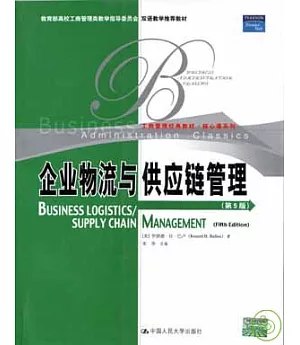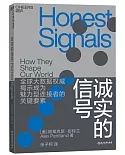PREFACE .
PART I: INTRODUCTION AND PLANNING
CHAPTER 1 Business Logistics/Supply Chain--A Vital Subject
Introduction
Business Logistics Defined
The Supply Chain
The Activity Mix
Importance of Logistics/Supply Chain
Business Logistics/SC in the Firm
Objectives of Business Logistics/SC
Approach to the Study of Logistics/SC
Questions and Problems
CHAPTER 2 Logistics/Supply Chain Strategy and Planning
Corporate Strategy
Logistics/SC Strategy
Logistics/SC Planning
Selecting the Proper Channel Strategy
Measuring Strategy Performance
Concluding Comments
Questions
PART II: CUSTOMER SERVICE GOALS
CHAPTER 3 The Logistics/Supply Chain Product
Product Characteristics
Product Packaging
Questions
CHAPTER 4 Logistics/Supply Chain Customer Service
Customer Service Defined
Order Cycle Time
Importance of Logistics/SC Customer Service
Defining a Sales-Service Relationship
Modeling the Sales-Service Relationship
Cost versus Service
Determining Optimum Service Levels
Service Variability
Service as a Constraint
Measuring Service
Service Contingencies
Concluding Comments
Questions
CHAPTER 5 Order Processing and Information Systems
Defining Order Processing
Order Processing Examples
Other Factors Affecting Order-Processing Time
The Logistics Information System
Information System Examples
Concluding Comments
Questions
PART III: TRANSPORT STRATEGY
CHAPTER 6 Transport Fundamentals
Service Choices and Their Characteristics
Transport Cost Characteristics
CHAPTER 7 Transport Decisions
Transport Service Selection
Vehicle Routing
Vehicle Routing and Scheduling
Freight Consolidation
Concluding Comments
Questions
PART IV: INVENTORY STRATEGY
CHAPTER 8 Forecasting Supply Chain Requirements
Nature of Forecasting
Forecasting Methods
Useful Techniques for Logisticians
Special Prediction Problems for Logisticians
Collaborative Forecasting
Flexibility and Quick Response--An Alternative to Forecasting
Concluding Comments
Questions
CHAPTER 9 Inventory Policy Decisions
Appraisal of Inventories
Types of Inventories
Classifying Inventory Management Problems
Inventory Objectives ..
Push Inventory Control
Basic Pull Inventory Control
Advanced Pull Inventory Control
Pipeline Inventories
Aggregate Control of Inventories
Supply-Driven Inventory Control
Virtual Inventories
Concluding Comments
Questions
CHAPTER 10 Purchasing and Supply Scheduling Decisions
Coordination in the Supply Channel
Supply Scheduling
Purchasing
Concluding Comments
Questions
CHAPTER 11 The Storage and Handling System
Need for a Storage System
Reasons for Storage
Storage System Functions
Storage Alternatives
Materials Handling Considerations
Storage System Costs and Rates
Virtual Warehousing
Concluding Comments
Questions
CHAPTER 12 Storage and Handling Decisions
Site Selection
Planning for Design and Operation
Materials Handling System Design
Order-Picking Operations
Concluding Comments
Questions
PART V: LOCATION STRATEGY
CHAPTER 13 Facility Location Decisions
Classification of Location Problems
A Historical Perspective on Location
Single Facility Location
Multiple Facility Location
Dynamic Warehouse Location
Retail/Service Location
Other Location Problems
Concluding Comments
Questions
CHAPTER 14 The Network Planning Process
The Problem of Network Configuration
Data for Network Planning
The Tools for Analysis
Conducting the Analysis
A Location Case Study
Concluding Comments
Questions
PART VI: ORGANIZATION AND CONTROL
CHAPTER 15 Logistics/Supply Chain Organization
Organizing the Logistics/SC Effort
Organizational Choices
Organizational Orientation
Organizational Positioning
Interfunctional Management
Interorganizational Management
Alliances and Partnerships
Concluding Comments
Questions
CHAPTER 16 Logistics/Supply Chain Control
Control System Details
Control in Practice
Control Information, Measurement, and Interpretation
Corrective Action
A Supply Chain Operations Reference (SCOR) Model
Control Links to Artificial Intelligence
Concluding Comments
Questions




























